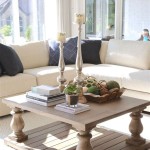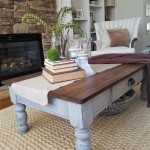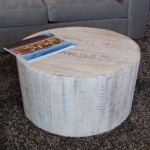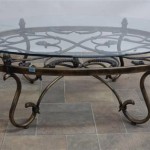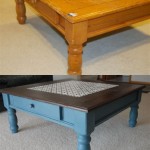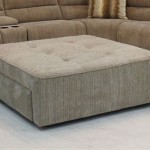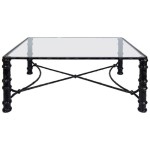What Causes a Glass Table to Shatter in the Middle of Seemingly Nowhere?
The sudden and unexpected shattering of a glass table can be a startling and even alarming event. To witness a seemingly sturdy piece of furniture spontaneously disintegrate into countless fragments without any apparent external force or impact raises questions about the inherent stability of glass and the factors that can contribute to its catastrophic failure. This article delves into the underlying causes that can lead to the shattering of a glass table, focusing on the internal stresses, manufacturing imperfections, environmental influences, and even subtle vibrations that can conspire to weaken the glass and ultimately cause it to break.
Understanding these factors is crucial for manufacturers, retailers, and consumers alike. Manufacturers can improve their production processes and quality control measures to minimize the risk of spontaneous breakage. Retailers can provide better information to customers about the proper care and handling of glass furniture. And consumers can make more informed decisions about the types of glass furniture they purchase and how they maintain it to maximize its lifespan and safety.
The nature of glass itself plays a significant role in its susceptibility to shattering. Glass is an amorphous solid, meaning that its molecules are arranged in a disordered, non-crystalline structure. This inherent randomness creates internal stresses within the glass, which, while usually stable, can become points of weakness under certain circumstances. These internal stresses, combined with external factors, can lead to a catastrophic chain reaction that results in the complete disintegration of the glass.
Furthermore, the type of glass used in a table greatly influences its resistance to shattering. Tempered glass, for instance, is designed to be significantly stronger than standard annealed glass due to a specific heat treatment process. This process creates a compressive stress on the surface of the glass, making it more resistant to impact and bending. When tempered glass does break, it shatters into small, relatively harmless fragments rather than sharp, jagged shards. However, even tempered glass is not immune to shattering, especially if subjected to specific types of stress or damage.
Internal Stress and Manufacturing Defects
One of the primary culprits behind spontaneous glass breakage is internal stress. During the manufacturing process, glass is heated to high temperatures and then cooled. If the cooling process is not uniform, different parts of the glass may cool at different rates. This differential cooling creates internal stresses within the glass structure. Imagine a scenario where the outer layers of the glass cool and solidify first, while the interior remains hot and pliable. As the interior eventually cools and contracts, it pulls against the already solidified outer layers, creating tension. This tension can remain "locked" within the glass for years, gradually weakening its overall structure.
Manufacturing defects can exacerbate the issue of internal stress. Microscopic imperfections, such as tiny bubbles, inclusions of foreign material, or surface scratches, can act as stress concentrators. These imperfections create points where the internal stresses are amplified, making the glass more susceptible to cracking and ultimately shattering. Even seemingly insignificant flaws can become critical points of failure over time, especially when combined with other contributing factors.
Nickel sulfide (NiS) inclusions are a particularly problematic type of manufacturing defect. NiS is a compound that can sometimes form during the glass manufacturing process. These inclusions undergo a phase change at around 700 degrees Fahrenheit, causing them to expand. If NiS inclusions are present within the glass, this expansion can create localized stresses that eventually lead to fracture. The shattering caused by NiS inclusions is often delayed and unpredictable, making it difficult to detect and prevent.
Quality control measures in glass manufacturing aim to minimize internal stress and detect manufacturing defects. Techniques such as annealing (slow, controlled cooling) and rigorous inspection are employed to reduce the likelihood of spontaneous breakage. However, even with the best quality control practices, it is impossible to eliminate all internal stresses and defects completely.
Environmental Factors and Temperature Fluctuations
Environmental factors, particularly temperature fluctuations, can also contribute to the shattering of a glass table. Glass expands when heated and contracts when cooled. If a glass table is exposed to significant temperature changes, the differential expansion and contraction can create stress within the glass. For instance, a glass table placed near a window may experience significant temperature swings depending on the time of day and weather conditions. Direct sunlight can heat the glass significantly, while cold drafts can quickly cool it down. Repeated cycles of expansion and contraction can weaken the glass over time, making it more prone to shattering.
Humidity can also play a role. While glass is generally impervious to moisture, prolonged exposure to high humidity can, in some cases, contribute to surface degradation. This is more relevant in situations where the glass surface is already compromised by scratches or other imperfections, which can then act as points where moisture can penetrate and further weaken the structure.
The placement of the glass table within a room also matters. Tables situated near heating vents or air conditioning units are more likely to experience temperature fluctuations that can lead to stress. Similarly, tables placed in areas with poor ventilation may be subject to excessive humidity, which can, over considerable time, exacerbate existing flaws.
Vibrations and Subtle Impacts
While a forceful impact is an obvious cause of glass breakage, even subtle vibrations and minor impacts can contribute to the shattering of a glass table, especially if the glass is already weakened by internal stresses or manufacturing defects. Continuous vibrations, such as those from traffic, construction, or even a nearby sound system, can gradually weaken the glass structure over time. These vibrations, though imperceptible to the naked eye, can cause microscopic cracks to propagate slowly, until they reach a critical point where the glass suddenly fails.
Minor impacts, such as bumping the table with a chair or accidentally dropping a light object on it, may not cause immediate damage, but they can create small chips or scratches on the surface. These seemingly insignificant flaws can act as stress concentrators, making the glass more vulnerable to shattering in the future. Over time, the accumulation of these minor damages can significantly reduce the overall strength of the glass and increase the risk of spontaneous breakage.
The support structure of the table also plays a role. If the table frame is uneven or unstable, it can put uneven pressure on the glass, creating stress points. A poorly designed or constructed frame can exacerbate the effects of vibrations and impacts, further increasing the likelihood of shattering. Ensuring that the table frame is level and provides adequate support is essential for maintaining the integrity of the glass.
In summary, the shattering of a glass table, even apparently spontaneously, is rarely due to a single cause. Instead, it is usually the result of a combination of factors, including internal stresses from manufacturing, environmental influences, and subtle vibrations or impacts. Understanding these contributing elements is crucial for preventing such incidents and ensuring the safety and longevity of glass furniture.

Glass Tables Are Exploding Here S Why

Glass Tables Are Exploding Here S Why

Glass Tables Are Exploding Here S Why

Why Do Shower Screens Shatter Causes Explained

Glass Tables Are Exploding Here S Why

Why Do Shower Screens Shatter Causes Explained

What Causes Glass To Shatter By Itself

Why We Re Not Worried About Pyrex Bakeware Exploding Wirecutter

Causes Of Spontaneous Glass Breakage And How To Prevent It Sieger Architektur Systems

Causes Of Spontaneous Glass Breakage And How To Prevent It Sieger Architektur Systems
Related Posts

